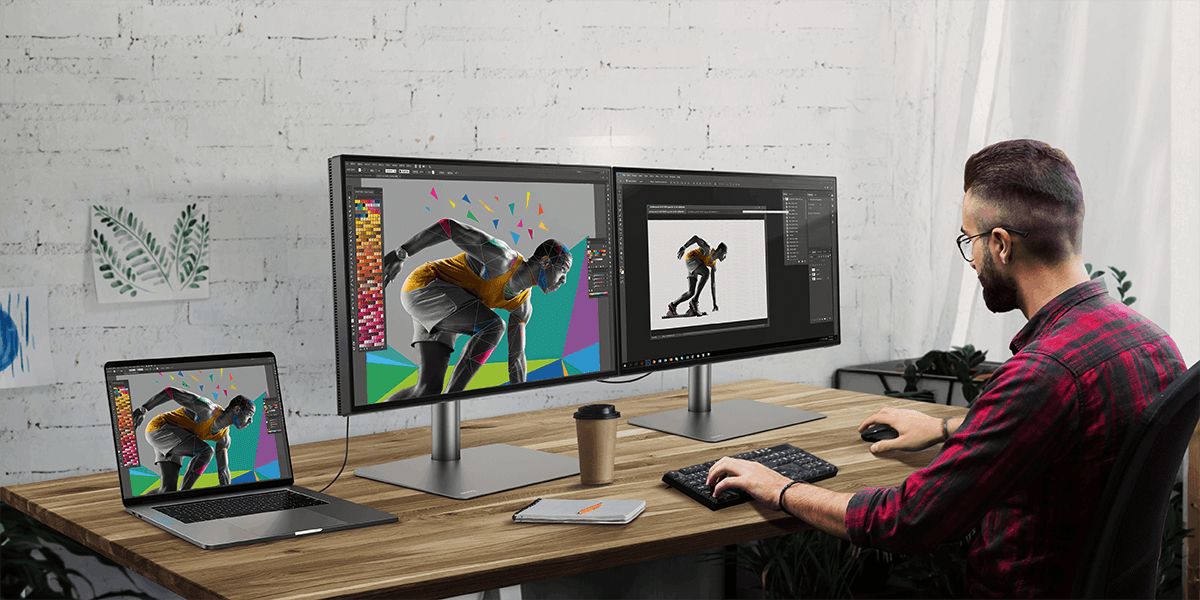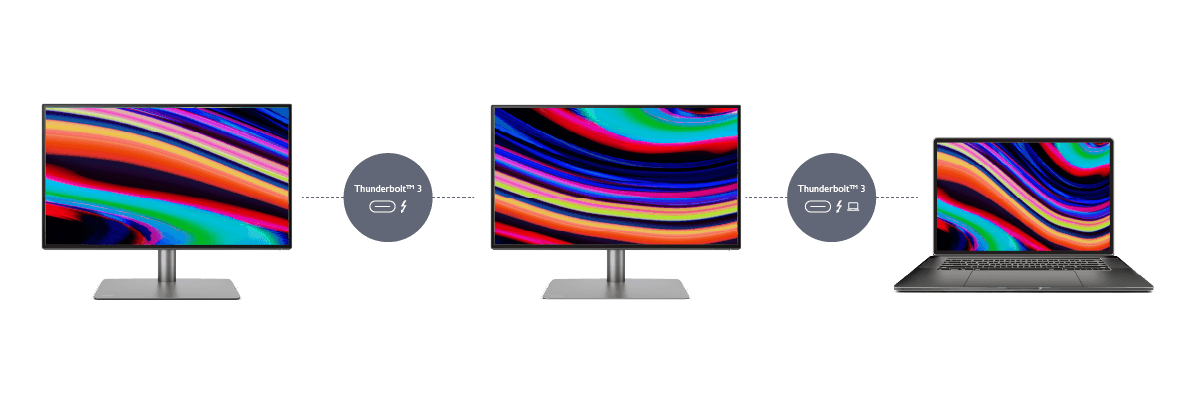

Nowadays, as laptops are getting thinner and lighter and the amount of available ports is minimized, if you want a solution that integrates multiple monitors with a laptop using only a single video port, you will need to find a way to connect all your monitors through one connection.
As a designer, if your work is always graphics-heavy and involves extensive multi-tasking, the layout of your workspace, including your use of monitors, is crucial for productivity. And many times, you would likely agree that one monitor is simply not enough. Imagine if you could separate your space based on function, maybe one screen for editing and another for research or review, and have enough space for each. You will tackle any given task more efficiently.
With the most recent iterations of standards such as DisplayPort and Thunderbolt there now exists ways in which you can interconnect multiple monitors via a single cable for each device, which is known as daisy-chaining. The laptop is connected to a monitor using just a single cable, and then that monitor is connected to a subsequent monitor using one cable, and so on for any remaining monitors. The advantage of daisy chaining multiple monitors is obvious: by utilizing just one cable for each device you simplify the entire process as well as reduce the clutter that would have resulted from any other connection method. All of this allows you to bolster productivity by maximizing your ability to multi-task. Once daisy chained, you’ll have the flexibility to arrange your virtual desktop the way you want.

There are two types of ports that allow you to daisy chain monitors: DisplayPort and Thunderbolt. Ensure that your PC features an output port of either type and that the monitors feature both input and output ports of the same type.
NOTE: MacBooks only support daisy chaining via Thunderbolt. Daisy chaining is not supported via HDMI versions earlier than 2.1 or basic USB ports on any device.
For daisy chain connections via DisplayPort, DisplayPort on all your devices MUST be version 1.2 or higher and support Multi-Stream Transport (MST).
To daisy chain via DisplayPort:
1. Power on all monitors.
2. Enable DisplayPort 1.2 and/or MST in the settings menu of each monitor.
3. Connect your laptop to monitor 1 by:
4. Connect the DisplayPort out on monitor 1 to the DisplayPort in on monitor 2 using a DisplayPort cable.
5. Repeat step #4 for any subsequent monitors.

Due to bandwidth limitations, connecting more than two monitors via DisplayPort may cause a lowering of resolution on one or all of the monitors. Check the specifications of your laptop’s GPU to see if it supports adding multiple monitors.
For daisy chain connections via Thunderbolt, the Thunderbolt port on all your devices must be version 3 or higher and all connections require use of Thunderbolt 3 (or higher) cables.
To daisy-chain via Thunderbolt:
1. Power on all monitors.
2. Connect the Thunderbolt out on your laptop to the Thunderbolt in on monitor 1.
3. Connect the Thunderbolt out on monitor 1 to the Thunderbolt in on monitor 2.
4. Repeat step #3 for any subsequent monitors.

Thunderbolt supports a higher bandwidth which allows for 4K@60Hz for two monitors, and up to six monitors at 1080p. Check the official Thunderbolt website for specifications regarding support for multiple
*Please use Thunderbolt 3 certified cables with the Thunderbolt 3 icon shown.
Besides daisy chaining, there’s another way to make your workspace more efficient, known as a KVM switch, or keyboard, video, and mouse switch. KVM switching allows you to control multiple operating systems via a single keyboard and mouse set. You can thus work on one system designing and on another checking galleries without switching keyboards and mice.